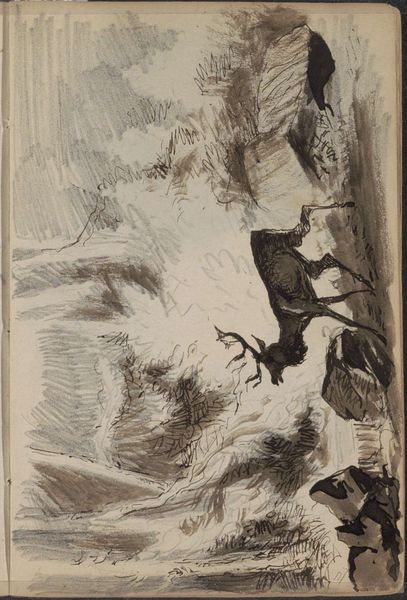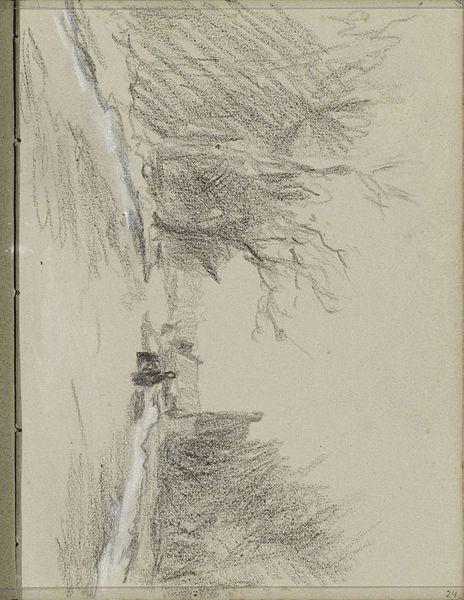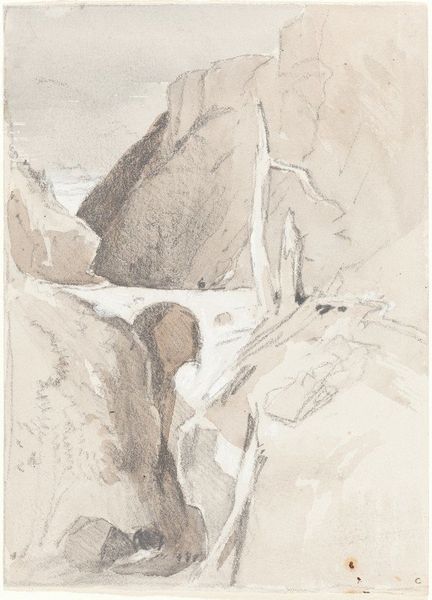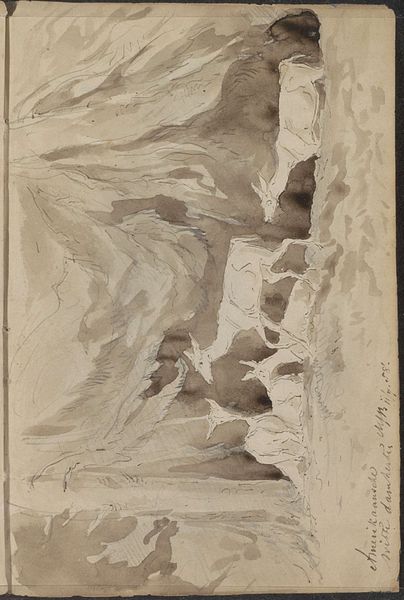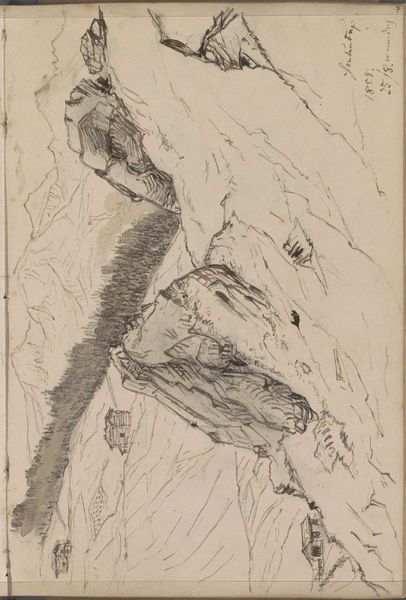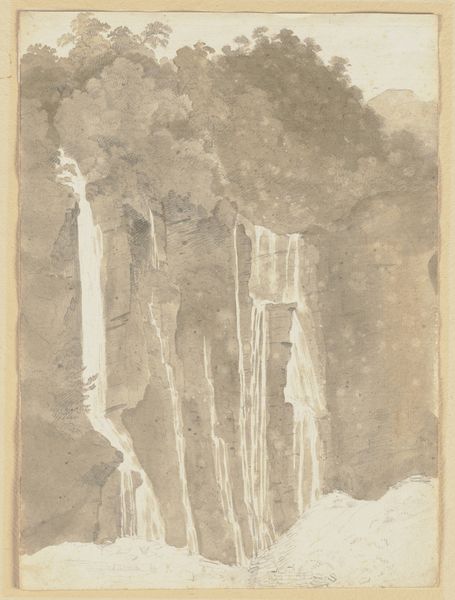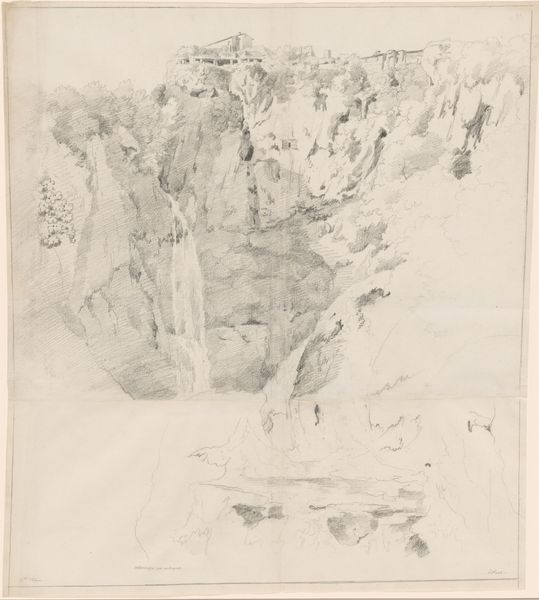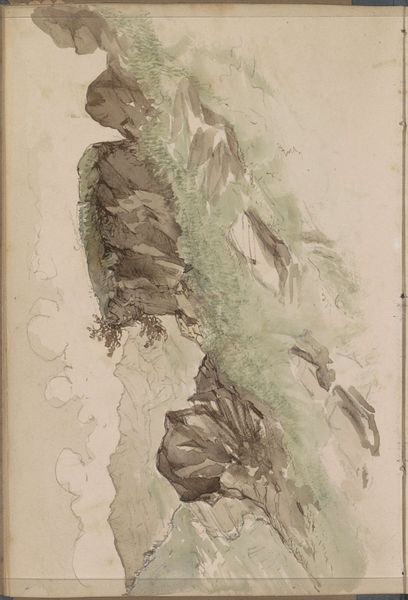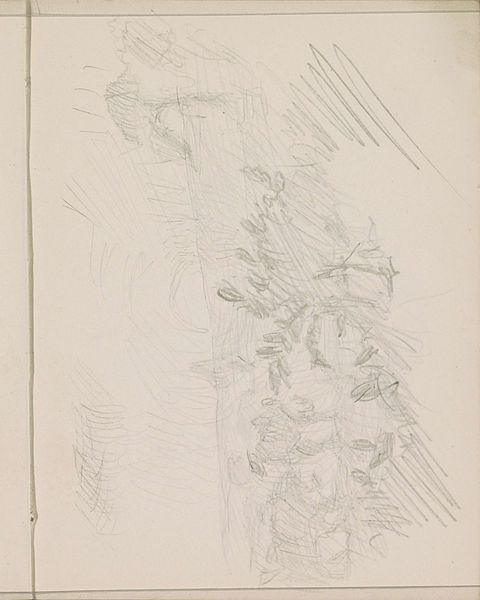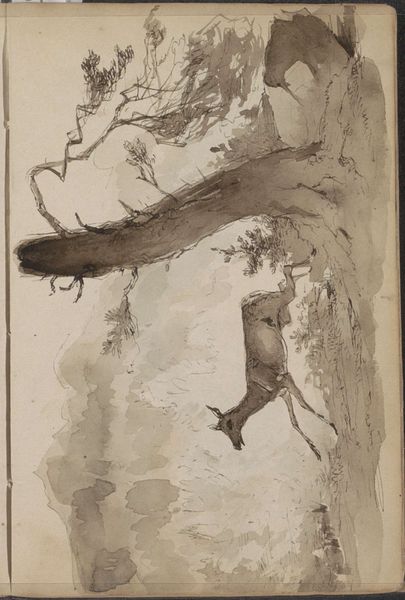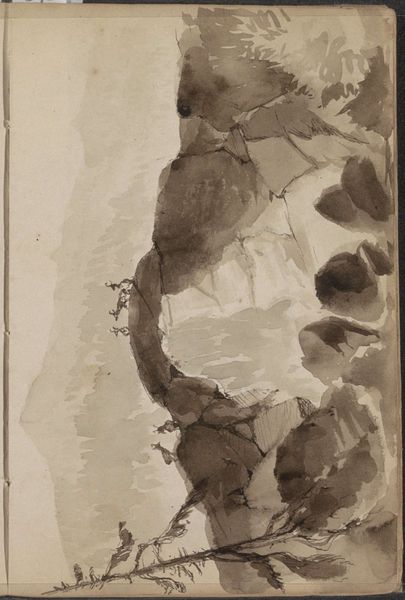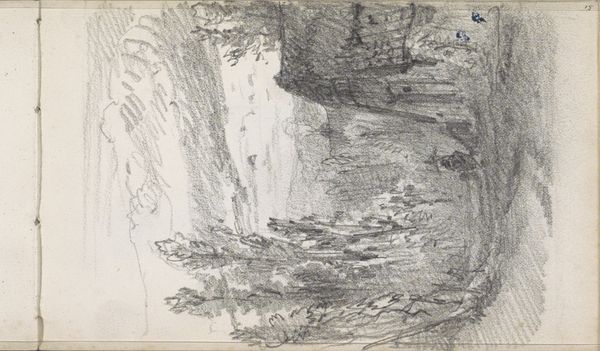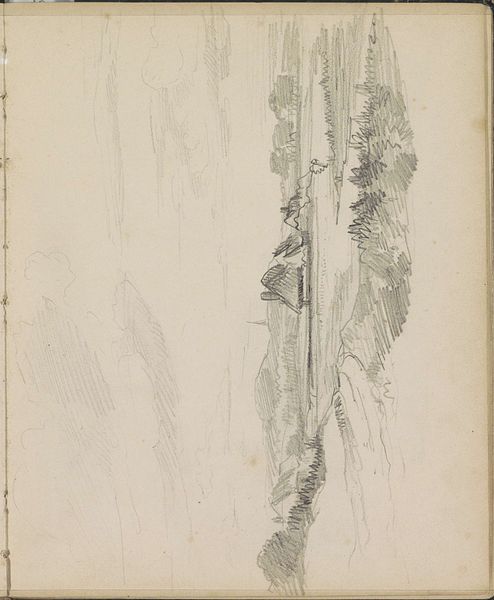
drawing, paper, watercolor, ink
#
drawing
#
ink painting
#
landscape
#
waterfall
#
paper
#
watercolor
#
ink
#
rock
#
watercolour illustration
#
watercolor
#
realism
Copyright: Rijks Museum: Open Domain
Editor: Here we have Johannes Tavenraat's "Waterval," likely from 1858 or 1859, a drawing in ink and watercolor on paper. It has a very sketch-like, almost unfinished quality. What elements of composition stand out to you? Curator: Immediately, the use of value and line is apparent. Note how the artist employs a limited tonal range, primarily shades of grey and brown, to define the waterfall’s form. The rapid, almost calligraphic, lines suggest movement and energy, while the broader washes establish the mass and volume of the rocks and water. Editor: So the structure isn’t necessarily representational, but about form. What does that say about how we might “read” the drawing? Curator: Precisely. It shifts the emphasis away from strict realism toward the artist's engagement with the materiality of the media itself. Observe how the ink bleeds and pools, creating textures that mimic the fluidity of water. Also, the layering effect generates a sense of depth despite the limited palette. Editor: Is that lack of clear depiction intentional, or more like an exercise? Curator: Determining "intention" is difficult. We can say the incomplete, abstracted forms compel the viewer to participate in constructing the image, to fill in the gaps, mentally, based on the visual cues Tavenraat provides. Does that shift your own perception? Editor: It does! I was focused on it being “not finished,” but it's actively prompting something in me, so perhaps it’s complete in another sense. Curator: Yes, by attending to the pure visual dynamics we appreciate it more, perhaps, for the qualities of process. The image becomes about the experience of perception rather than the transcription of nature. Editor: Thanks! I appreciate this new approach of "reading" artwork using semiotics, structuralism, and philosophy; it offers a more complete understanding.
Comments
No comments
Be the first to comment and join the conversation on the ultimate creative platform.

